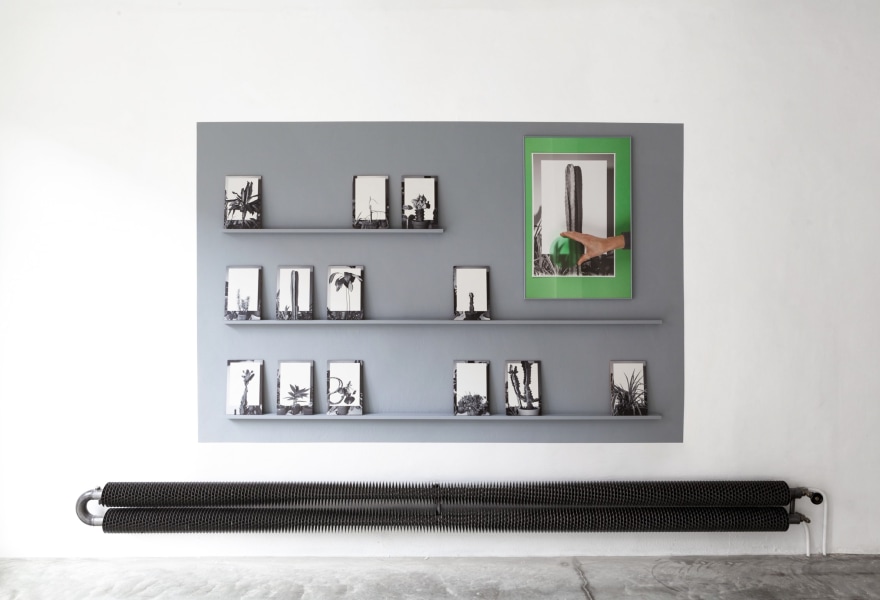11 march 2022, Flor Linckens
An exchange of views between two artists
In the Conversation series in DMW Gallery in Antwerp, an artist invites a second artist for a stimulating duo exhibition. For the most recent edition, Sarah Van Marcke invited the German artist Katrin Kamrau. The exhibition 'A Conversation', which can be seen in the gallery until 16 April, shows how their work relates to each other.
In recent years, more and more attention has been paid to the ways in which our worldview, and by extension our art, history, archives and so on, are determined by patriarchal, western and imperialist elements. The way we catalog our history is anything but neutral. The decolonisation of museums is comprehensive, but in concrete terms it can mean, for instance, that next to a work by Picasso, you'll see a centuries old sculpture that Picasso was inspired by, without him offering any credit for his inspiration. This provides the painting with a more complete context. Other objects, that were looted centuries ago in a colonial context, are returned to their original owners. Decolonisation is of course a very broad concept, but in short: the white, western man and his Eurocentric worldview are no longer considered the norm and standard.
The exhibition at DMW Gallery shows the ways in which Sarah Van Marcke and Katrin Kamrau are investigating these mechanisms in the context of heteropia, a term first used by the French philosopher Michel Foucault. He used it to describe a world within a world, something that interrupts the continuity of everyday space. Think of a cinema, a prison, a museum, brothel or cemetery. But it might also refer to an archive or an encyclopedia.
The Belgian artist Sarah Van Marcke ensures that the gallery space is transformed into a kind of indoor botanical garden. She examines the ways in which an imperialist society has tried to control and delimit nature in controlled spaces, for example in the context of a nature encyclopedia or nature reserve. The artist completed a master's degree in Photography at Sint Lukas in Brussels and in her practice, she focuses on photography and video. But she's also known for making screen prints, etchings and installations. Humour, beauty and sadness are often central to this. She is interested in the ways in which people influence their immediate environment — and their disturbed relationship with nature. Conversely, she also looks at how plants and animals conform to a habitat that was created by humans. This manipulation of environments is also the result of certain power relations. Van Marcke has previously conducted research into house plants, bird nests, literary utopias and the Winkler Prins encyclopedia, and she traveled more than 3000 kilometers in southern Japan to explore various utopian locations that were created by well-known architects.
Katrin Kamrau dives into Western archives, like the Agfa Gevaert archive, the film archive of Huis van Alijn in Ghent and the archive of the National Women's Council (NVR). What implicit social and ideological meanings -such as white superiority or patriarchal values - are an inherent part of these systems, and what does that say about the ways in which we capture and read images? Kamrau studied Photography and Media at the University of Applied Sciences in Bielefeld, followed by a postgraduate program at the HISK in Ghent and a research role at the Jan van Eyck Academy in Maastricht. In her practice, she takes a closer look at the ways in which imaging and perception take place within the medium of photography.
Kamrau: “In my artistic practise I mainly deal with lens based images and question what they tell about social interaction, power structures and the ascription of social roles or relations.”
Kamrau also emphasises the fact that the medium of photography as an idea is a construct that originated in the West. To what extent are these images a reflection of our (historical) Western society? A relevant question, not in the least because the process of recording, preserving and presenting in archives is often carried out by white people. That also explains why Artificial Intelligence is automatically racist and sexist to a degree, simply because it is usually programmed by white men who, consciously or unconsciously, regard themselves as the norm. In practice, this means, for example, that Black faces and women's voices don't get recognised as well. Tip: make sure to watch the (Dutch) documentary series Reference Man on this subject.


